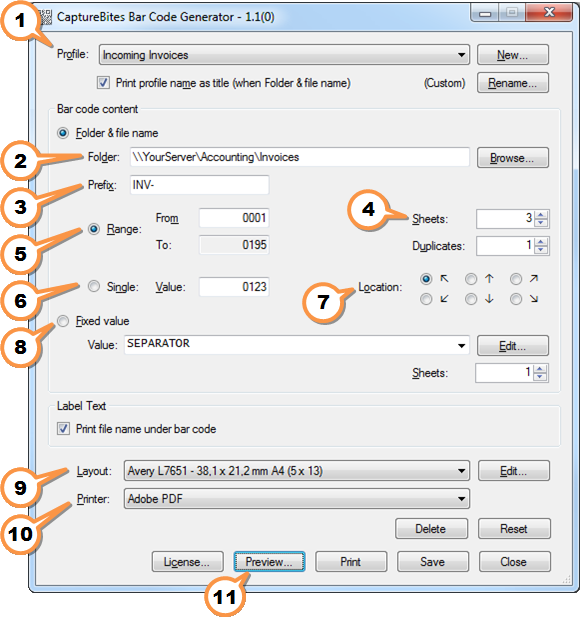Patch Code Separator
How to Use Patch Code Sheets. Print the patch code sheet on the printer. Print the patch code sheet. Data on the following size paper: Print PATCH II (A4) and PATCH T (A4) on A4 size paper. Print PATCH II (LTR) and PATCH T (LTR) on letter size paper. Patch code patterns are detected within the enabled range shown below. Barcode Batch Separator is a program that increases employee productivity at the copy machine when scanning numerous small files. It allows the user to take full advantage of the copier's speed when scanning. Currently if a user is scanning a batch of files they need to scan one file at a time. Fujitsu ScandAll PRO How To Use Manual. Most useful pages. Two sizes (A4 and Letter) of PDF files are provided as patch code sheets. Before using the job separation function with patch code sheets, select Start All Programs Fujitsu ScandAll PRO Patch Code (A4) or Patch Code (Letter), and then print a PDF file of.
Code 39 has some limitations. It can only contain numbers and upper case letters. Only a few special characters are supported but because it dates from before email existed it does not support the @ symbol. To be precise only SPACE, minus (-), period (.), dollar sign ($), slash (/), percent (%) and plus (+) are supported. Anyone who has ever worked with Code 39 fonts has probably experienced how painful it is just to get a space character in the bar code.Code 39 is also large in size and takes a lot of space on your documents.

Patch T Type Separator Sheet
None of these disadvantages exist with the new 2D bar codes. They are very compact, even more reliable than linear bar codes and can contain any character including any special characters used in languages such as Spanish, Portuguese, French, German, Dutch, Scandinavian and Slavic languages.Of all the 2D codes, the QR Code has become the most popular type. QR is short for Quick Response. It’s super compact, very reliable and can even be decoded if it’s damaged. Thank to it’s quick response design (the corner squares) it can be located very rapidly by a decoder such as in your phone or by an embedded bar code decoder in your capture software like Kofax Express, Kofax Capture and Kodak Capture Pro.To give you an idea. “www.capturebites.com” encoded in a QR Code looks like this.
Print out QR label sheets. Each QR code can contain the full path where to store the scanned document and a sequentially numbered file name.
The file name can be pre-fixed with any combination of characters. Print out a QR code directly on the original document. Print out miniature QR code labels with a fixed value to serve as separation marker.

Print out separation sheets that can be inserted before the beginning of each document. Works with any standard Windows printer including printing to PDF for deferred printing.
The download button on top of this page installs a functional version of this CaptureBites product. It also includes some demo images and a demo job to show the functionality.In demo mode, a demo seal will be stamped in all exported images. You can switch the demo version to full production mode by entering an activation code which you can purchase from.
You can continue using any of the jobs you configured in demo mode after activation of the software.If you don't have Kofax Express yet, you can download a trial from.
Patch Code Separator Sheets
You use separator when you are building a file path. So in unix the separator is /. So if you wanted to build the unix path /var/temp you would do it like this: String path = File.separator + 'var'+ File.separator + 'temp'You use the pathSeparator when you are dealing with a list of files like in a classpath. For example, if your app took a list of jars as argument the standard way to format that list on unix is: /path/to/jar1.jar:/path/to/jar2.jar:/path/to/jar3.jarSo given a list of files you would do something like this: String listOfFiles =.String filePaths = listOfFiles.split(File.pathSeparator).
